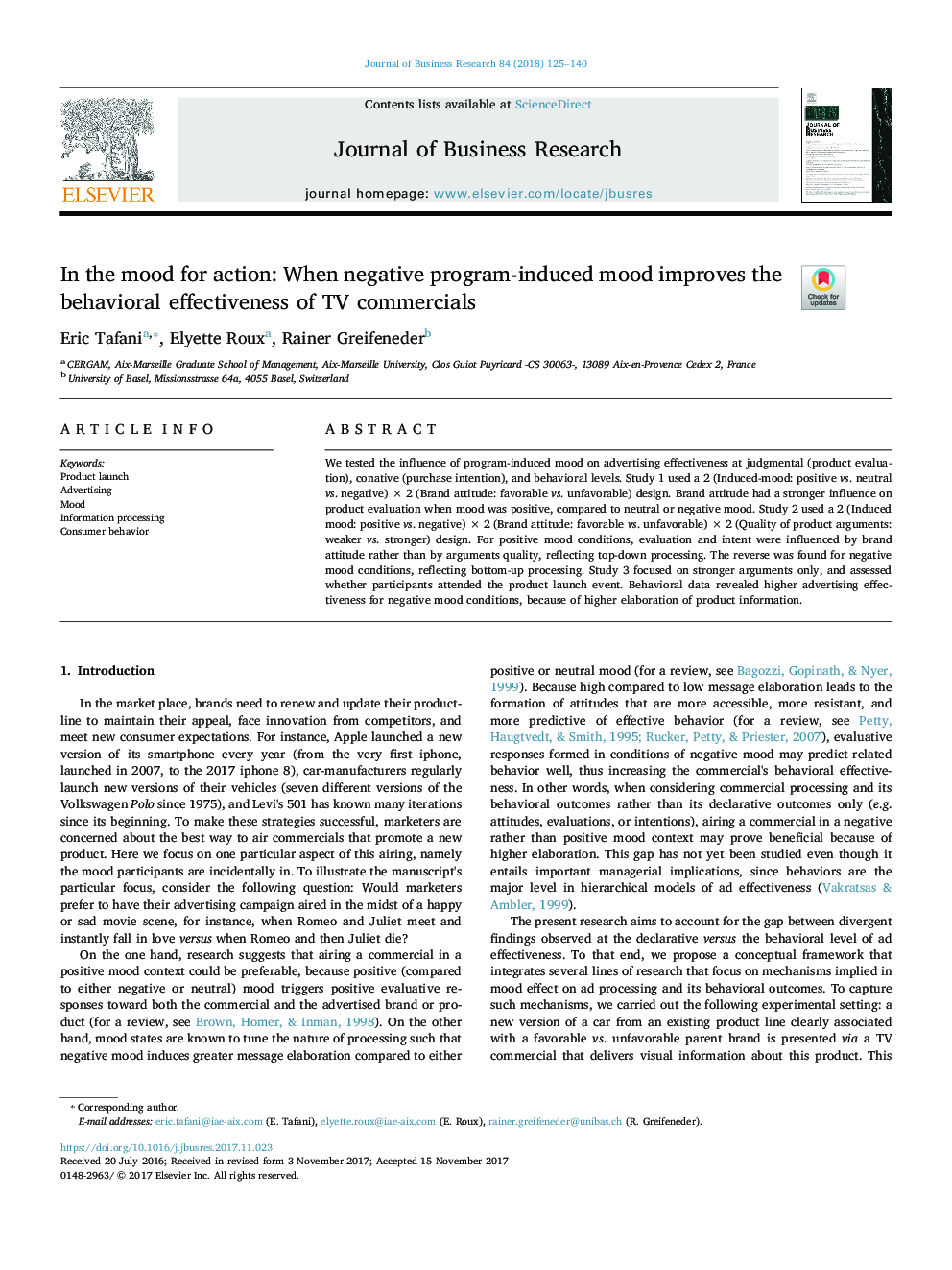| Article ID | Journal | Published Year | Pages | File Type |
|---|---|---|---|---|
| 7425341 | Journal of Business Research | 2018 | 16 Pages |
Abstract
We tested the influence of program-induced mood on advertising effectiveness at judgmental (product evaluation), conative (purchase intention), and behavioral levels. Study 1 used a 2 (Induced-mood: positive vs. neutral vs. negative)Â ÃÂ 2 (Brand attitude: favorable vs. unfavorable) design. Brand attitude had a stronger influence on product evaluation when mood was positive, compared to neutral or negative mood. Study 2 used a 2 (Induced mood: positive vs. negative)Â ÃÂ 2 (Brand attitude: favorable vs. unfavorable)Â ÃÂ 2 (Quality of product arguments: weaker vs. stronger) design. For positive mood conditions, evaluation and intent were influenced by brand attitude rather than by arguments quality, reflecting top-down processing. The reverse was found for negative mood conditions, reflecting bottom-up processing. Study 3 focused on stronger arguments only, and assessed whether participants attended the product launch event. Behavioral data revealed higher advertising effectiveness for negative mood conditions, because of higher elaboration of product information.
Related Topics
Social Sciences and Humanities
Business, Management and Accounting
Business and International Management
Authors
Eric Tafani, Elyette Roux, Rainer Greifeneder,
